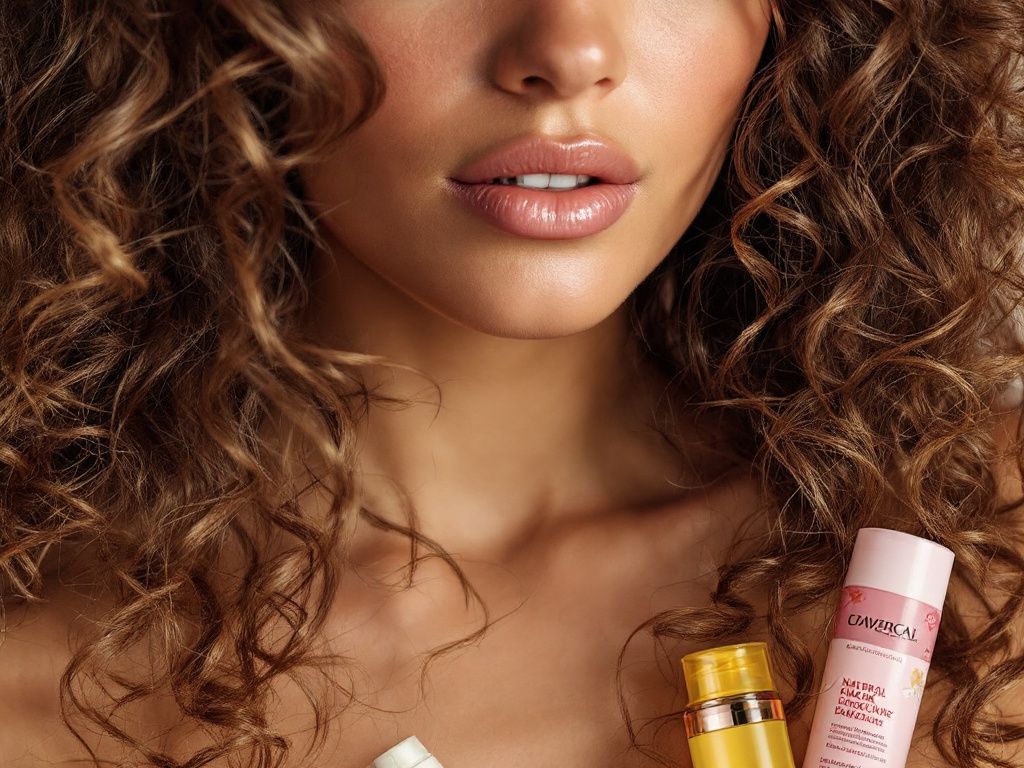
Welcome to the world of hair care, a realm where ingredient labels hold the key to your best hair day. If you’ve ever found yourself wrestling with a tower of hair products in your shower, wondering about the impact of terms like silicones, sulfates, parabens, and more—you’re not alone. Understanding these complex components isn’t just the secret to perfect curls but also the foundation of maintaining healthy, vibrant hair. 🌟 With a background in cosmetic chemistry and backed by rigorous scientific research, I’m here to offer a technical yet accessible breakdown of these ingredients and their implications on every curl type.
The Building Blocks of Hair Products: Silicones & Sulfates
When examining hair product ingredients, it’s crucial to zero in on **silicones** and **sulfates**. These notorious ingredients often stir confusion and debate. Let’s dissect them scientifically to unravel what they mean for you and your curls.
Silicones: The Sleek Coat
Silicones are synthetic polymers often heralded for their ability to provide a temporary sleek, glossy finish to the hair. Famous for their moisture-sealing properties, silicones like **dimethicone** and **cyclopentasiloxane** are top players.
- Moisture Retention and Shine✨: Silicones form a waterproof layer around the hair shaft, effectively locking in moisture and smoothing down rough cuticles. This is especially beneficial for reducing frizz—a common nemesis for those with curly hair.
- The Downside: However, with their benefits come pitfalls. Silicones can accumulate on the hair over time, leading to buildup that may eventually weigh hair down and prevent moisture or beneficial treatments from penetrating the hair shaft.
**Example**: Many curly-haired individuals find relief in water-soluble silicones like **silicone quaterniums**, which are easier to wash away, thus avoiding the dreaded buildup.
Sulfates: The Cleanser Conundrum

Sulfates are the foaming agents that give your shampoo that satisfying lather, with **sodium lauryl sulfate (SLS)** and **sodium laureth sulfate (SLES)** being the most prevalent.
- Effective Cleansers: Sulfates act as surfactants, adeptly binding to oil, dirt, and pollutants for effective removal from the hair and scalp. This level of cleansing is often needed to thoroughly rinse away styling products.
- Stripping Agents: Unfortunately, sulfates can also strip natural oils from your hair, leading to dryness—a significant concern for curly hair, which tends to be naturally more dehydrated.
**Research Insight**: According to a 2015 study published in the Journal of the Society of Cosmetic Chemists, sulfate-free shampoos help retain natural oils while reducing scalp irritation, proving beneficial for individuals with sensitive skin and curly hair needing moisture retention. 📉
Parabens: Preservatives Under Scrutiny
Beyond silicones and sulfates, parabens often feature prominently in discussions of potentially harmful ingredients in hair care. Acting as preservatives, parabens prevent fungi and bacterial growth, extending the shelf life products.
- Safety Profile: Studies from the Cosmetic Ingredient Review (CIR) panel affirm that parabens are safe at levels up to 25% in formulations—a far cry from the percentages usually found in cosmetic products (typically below 0.8%).
- Health Concerns: Meta-analyses in recent years have raised questions about parabens’ association with hormone disruption, though conclusive evidence remains lacking. Thus, phasing out parabens has become a selling point for many brands investing in “clean” beauty formulations.
**Professional Insight**: Transitioning to paraben-free products aligns with consumer demand for safer alternatives and aligns with broader health trends, without significant compromise to product efficacy.
Matching Ingredients to Curl Types
Type 2: Wavy Hair

For wavy hair, the key is to manage frizz without weighing down the hair.
- Silicone Strategy: Opt for lightweight water-soluble silicones that impart shine without burdening the hair.
- Sulfate Alternatives: Gentle, sulfate-free cleansers maintain the delicate balance of moisture and cleanliness necessary for waves.
**Real-World Example**: Brands like “Maui Moisture” offer sulfate-free formulations ideal for wavy textures, ensuring moisture without overburdening the natural wave pattern.
Type 3 & 4: Curly to Coily Hair
Curly and coily hair types crave intensive moisture and protection from breakage.
- Embrace Silicones: While building up prevention is important, utilizing leave-in conditioners with silicones can aid in detangling and manageability—a boon to minimizing styling stress.
- Sulfate-Free Solutions: Focus on cowashes and cream-based cleansers, which cleanse gently while hydrating deeply.
**Industry Perspective**: According to a survey by NaturallyCurly, over 90% of users found improved curl definition and texture when switching to sulfate-free options specifically tailored for densely coiled hair. 🌀
Case Studies and Industry Standards
The Methodologies of Formulation

- Silicone-Free Movement: High-end brands are innovating new formulation methodologies that exclude traditional silicones. Olaplex—a hair care line renowned for its reparative properties—has pioneered products entirely devoid of silicones while leveraging bond-building technology.
- Gentle Surfactant Innovations: Companies such as DevaCurl have led the charge with a “No-Poo” method, opting for cleansers that use milder surfactants like **coco-glucoside, derived from coconut oil and glucose, instead of harsher sulfates.
Real-Life Implications and Applications
- Research-Backed Benefits: A 2022 review on the American Chemical Society emphasized scientific strategies firms are adopting to innovate “green formulations” that meet consumer demands for health-consciousness while not compromising on product performance. 🌍
Practical Tips for Selecting Hair Products
- Read Beyond Hype: Investigate product ingredient lists, keeping transparency and scientific backing front of mind.
- Patch Test New Products: Consider product sensitivity by performing preliminary trials on a smaller hair section and monitor reactions before full application.
- Leverage Technology: Apps like “Think Dirty” and “CosmEthics” help consumers research and track potentially harmful ingredients for informed decision-making.
Conclusion
Understanding the interplay of silicones, sulfates, and parabens in your hair care regimen is essential to harnessing their benefits while minimizing any potential drawbacks. Armed with scientific insights and informed choices, every curl type can thrive. As the hair care industry careers towards cleaner, more ethical beauty standards, staying informed is power. The journey to healthier, happier curls starts here, from ingredients analysis to ingredient analysis! ✨
Frequently Asked Questions
What are the benefits of using a hair mask in my hair care routine?
Using a hair mask can provide several benefits, including hydration, smoothing, strengthening, curl definition, heat protection, and damage repair. Hair masks infuse the hair with moisture, help coat the hair shaft to seal split ends, reduce breakage, and protect the hair from heat styling and environmental damage[1][4].
What ingredients should I look for in a hair mask?
Effective hair masks often include ingredients such as coconut oil, argan oil, shea butter, honey, avocado oil, green tea, and coconut water. These ingredients provide nourishment, moisturize, and protect the hair, offering benefits like softening, moisturizing, and protecting against damage[2][5].
How often should I use a hair mask in my routine?
You should use a hair mask whenever your hair feels dry, unmanageable, or in need of intense hydration. This can vary depending on your hair type and needs, but generally, using a hair mask once or twice a week can help maintain healthy and moisturized hair[1][4].
How do I apply a hair mask for the best results?
To apply a hair mask effectively, shampoo your hair first, then apply the mask, focusing especially on the ends where hair tends to be the most damaged. Leave the mask on for anywhere from 10 minutes to overnight, depending on the type of mask and your hair’s needs[1][4].
References


Leave a Reply